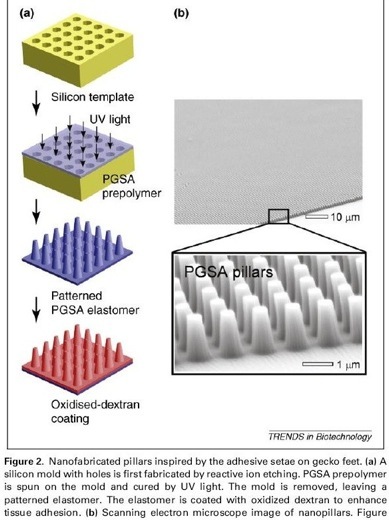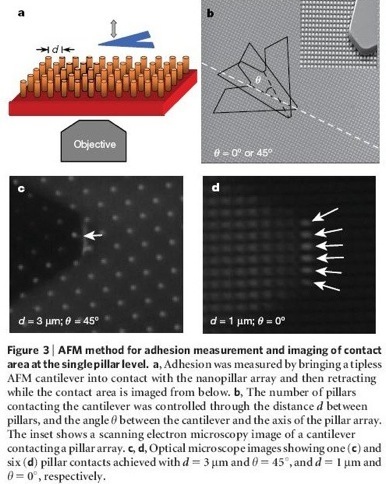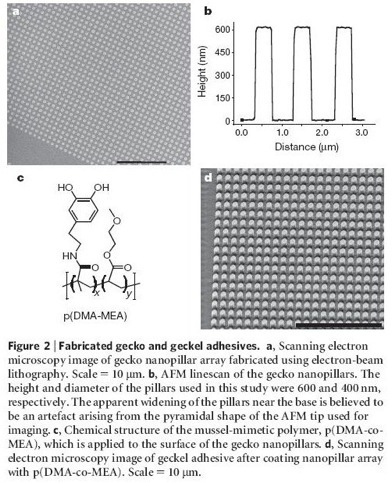In order for gecko tape to be used in medical adhesives, the tape must be able to form strong irreversible bonds to wet tissue-like environment. Briefly discussed here is an approach to create a synthetic gecko tissue adhesive that is biodegradable, elastomeric, and biocompatible.
Mahdavi et al. used a combination of soft and nano-lithography methods to create their version of gecko tape. They used reactive ion etching (RIE) to make holes in a silicon wafer. Then a tough biodegradable elastomer, poly(glycerol sebacate acrylate) (PGSA) was spun onto the wafer and cured with UV light. PGSA was chosen because it is elastic, biodegradable, and easily doped with drugs or growth factors. This process molded the PGSA into nanopillers [5].
The next step was to apply a thin layer of oxidized dextran with aldehyde functional groups (DXTA). DXTA is type of glue that would further promote adhesion to the pillars by allowing covalent crosslinking to tissue, doubling the adhesion strength of the tape. In order to optimize the geometry of the nanopillars, they were subjected to shear and sliding forces. In tests to evaluate the effectiveness of this tape, it performed with a little less than 50% of the shear adhesion strength on wet tissue compared to actual gecko feet on a dry surface [5].
This approach highlights the main problems researchers have had in creating a synthetic version of gecko foot hairs that can be used in varying applications. Repetitive contact cycles have been low as the adhesive is viable for a couple of cycles and the adhesiveness has been shown to be greatly reduced underwater.








